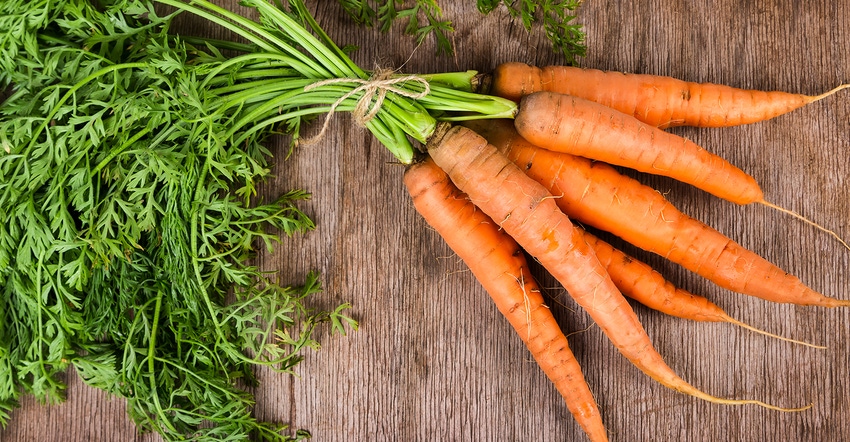February 15, 2017

“Which came first, the seed potato or the potato?” This question, based off the classic chicken-or-egg dilemma, was posed by a curious fourth grader during one of my recent classroom visits.
We had just finished watching a video that depicted how potatoes are grown, harvested and then sorted into packaging.
The video is part of the Mapping Out a Healthy Wisconsin presentation I bring to fourth-grade classrooms across the state, thanks to support from the Wisconsin Milk Marketing Board and the Department of Agriculture, Trade and Consumer Protection. It highlights 12 different healthy foods we grow in the state and explains how the nutrients found within each can help students grow up strong.
The foods come from all five food groups, and each time I give the presentation, I am reminded that Wisconsin is not only a leader in the dairy industry, but also a force to be reckoned with in regards to vegetables. Overall, our farmers harvest the second-highest amount of vegetables meant for processing in the U.S.
Last year, we grew an astonishing 43% of the nation's supply of green beans, weighing in at 330,000 tons. Wisconsin is currently the top grower of carrots and green beans for processing in the country. Our state also ranks third in the nation for growing sweet corn and peas for processing.
Grown and processed here
The vegetables we grow are processed in various plants across the state. Together, these plants contribute 259,600 jobs. One of the largest fruit and vegetable processors in the nation, Seneca Foods, has eight processing plants throughout Wisconsin.
The plants work with farmers to choose the different varieties of corn or peas that will be grown, and then planting is staggered to help manage the flow of vegetables through the processing plants during harvest. Peas are typically harvested between June and July, and corn has a later harvest range of July to September.
Once the harvested vegetables make it to the plant, they are cleaned and then canned.
At Seneca Foods, 75% of the pea cleaning process is done outside. Any byproduct from the cleaning process then goes to dairy farms near the plants as a high-quality food source. For corn, the ears are brought into the plant, and the kernels are removed by cob cutters. The total time for processing for peas is eight minutes, whereas corn takes a little bit longer at 15 minutes.
Finishing the process
After the products have been processed, they are put into cans, the cans are sealed in a process called seaming, and then the sealed cans are cooked to ensure the product is shelf-stable and safe. Some cans may be labeled for private companies, while others are sold with a label from the processing company. The cans are then shipped across the country and around the world.
After my tour of Seneca Foods, I now have a better understanding of how vegetables are packaged, but I still have no idea which came first, the potato or the seed potato. So if you know the answer, let me know.
And next time you pick up canned vegetables at the grocery store, I encourage you to think about the people behind that can. From the farmers to the truck drivers to the processing plant workers, your purchase is supporting our Wisconsin farms, communities and economy.
O’Leary is the 69th Alice in Dairyland. She is the niece of editor Fran O'Leary.
About the Author(s)
You May Also Like




